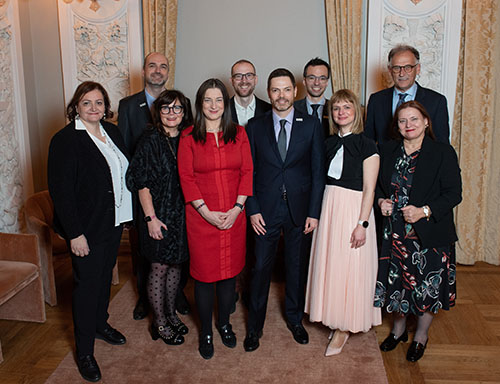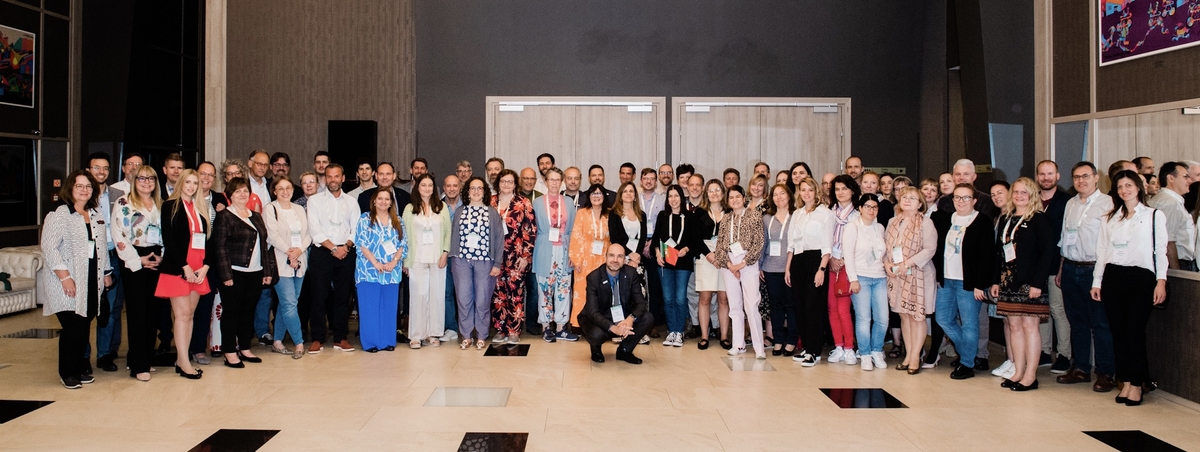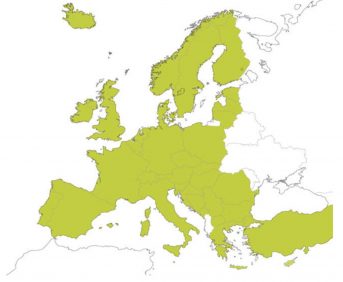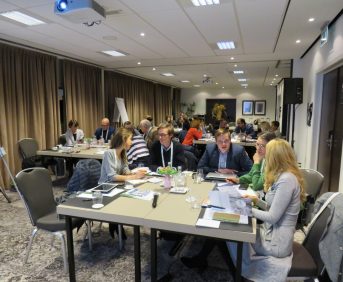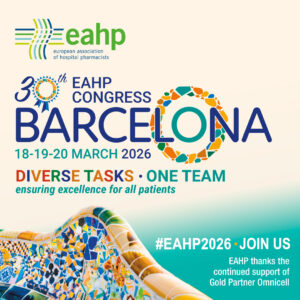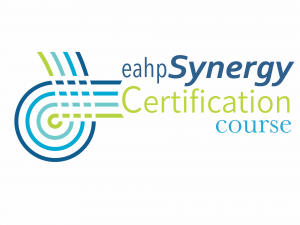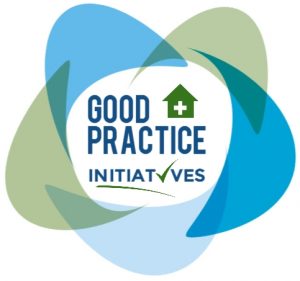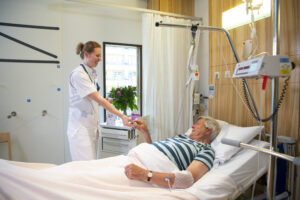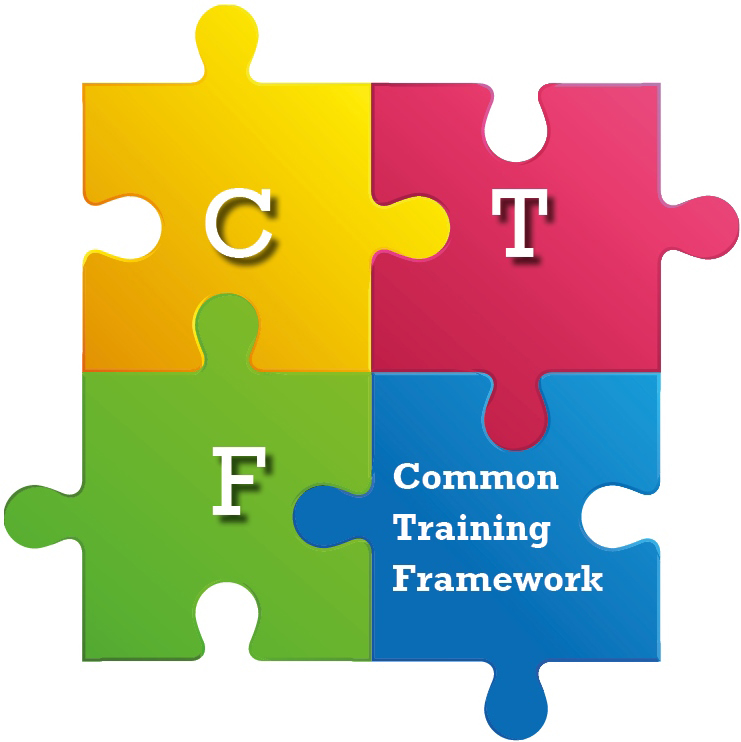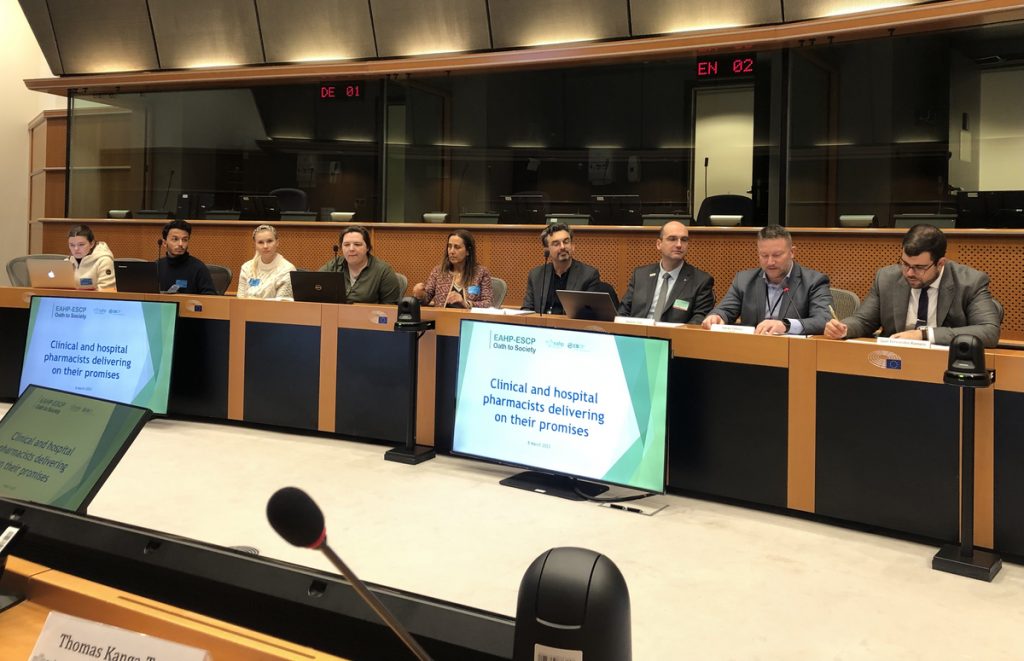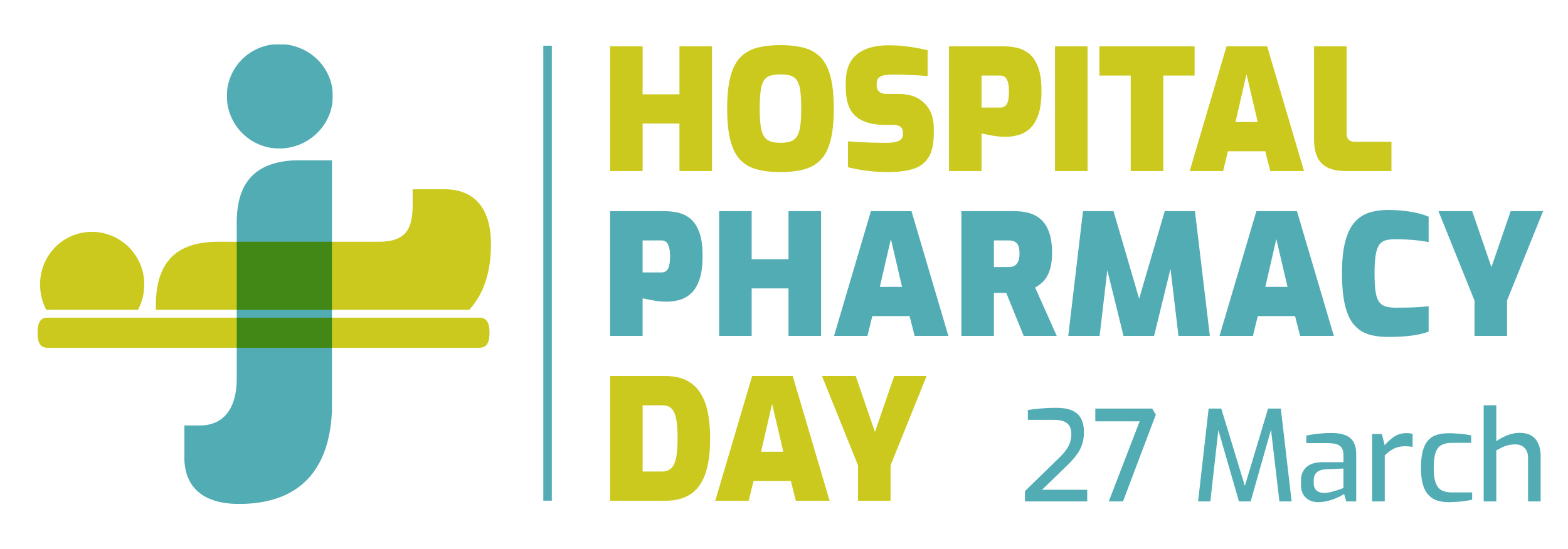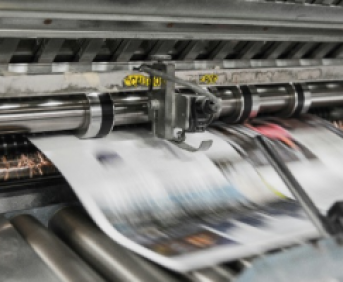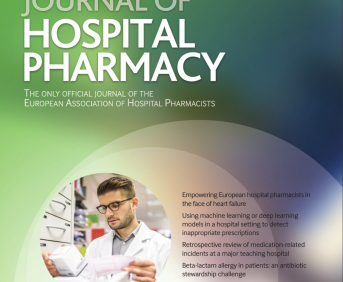IMPLEMENTATION OF A NEW CENTRALISED FLOOR STOCK IN A SECURED AUTOMATED STORAGE CABINET
Pdf

European Statement
Selection, Procurement and Distribution
Author(s)
Chloé HERLEDAN, Laura BEAUMIER, Laurence MINISCHETTI, Marie-Christine ALBERTO-GONDOUIN
Why was it done?
Existing floor stocks are limited to usual psychiatric drugs. On-call resident pharmacists dispense additional treatments during pharmacy closing hours. Hence, extending the floor stocks would facilitate continuity of care. SASC centralisation enables simple and secured access to medication while saving space in care units.
What was done?
A new drug and medical device floor stock was implemented in our psychiatric hospital. The floor stock is contained in a secured automated storage cabinet (SASC) located in a protected area inside the pharmacy and accessible during its closing hours. Utilisation training was offered to nurses through multiple formats.
How was it done?
Floor stock composition has been established from frequent requests made during on-call time and can be consulted on the pharmacy website. Prescriptions and patient informations can be checked before removal on a computer in the SASC area. The SASC requires badge identification, unit and patient name entry and provides traceability of removals. Moreover, cold storage requiring drugs are housed in a refrigerator unlocked through the SASC. Regarding utilisation training, all night nurses had to attend a demonstration of the SASC performed by the resident pharmacists. This demonstration was also offered to day nurses and head nurses during weekly pharmacy open days for three months. In addition, an instruction manual and a video tutorial were produced and uploaded on the website.
What has been achieved?
60/67 (89.5%) night nurses, 80/256 (31.2%) day nurses and 10/20 (50.0%) head nurses have attended the SASC demonstration. A satisfaction survey conducted among trained nurses or head nurses had an 18.7% response rate. 26/28 (92.9%) of respondents attended the demonstration and all were satisfied by its quality. 2/28 (7.1%) only used the instruction manual. All respondents declared being able to use the SASC, however 7/28 (25.0%) would need assistance from the instruction manual or video tutorial.
What next?
Further utilisation training or assistance will be provided by the video tutorial. Removals and prescriptions will be checked by pharmacists to uncover picking errors. Impact on resident pharmacists’ workload will be assessed within six months. Finally, SASC centralised floor stock is an interesting approach for hospital pharmacies with limited staff to improve continuity of care.
HOSPITAL PHARMACY CONTRIBUTION TO CLINICAL TRIALS: TYPIFICATION OF MEDICATION INCIDENTS AND PHARMACEUTICAL INTERVENTIONS IN A CLINICAL TRIAL UNIT
Pdf

European Statement
Patient Safety and Quality Assurance
Author(s)
Paula Arrabal-Durán, Carmen Herrero-Domínguez-Berrueta, María Norberta Sánchez-Fresneda, Ana Mur-Mur, Ana Herranz-Alonso, María Sanjurjo-Sáez
Why was it done?
MI and PI are normally recorded in Hospital Pharmacy Services as a method for evaluating safety. Nevertheless, classical methods for reporting MI do not allow for a correct classification in the field of clinical trials. The reason is their more complex processes involving drugs compared to the processes in daily clinical practice. If there are no specific categories, the information obtained by recording usually gets lost and could not reflect exactly what occurred. In September 2016, a clinical tool to notify MI and PI was implemented in the Pharmacy Service, with the aim of unifying their classification criteria and gathering complete information for analysis and further implementation of improvement measures.
What was done?
A database to notify medication incidents (MI) and pharmaceutical interventions (PI) in the Clinical Trials Unit was developed in the Pharmacy Service of a tertiary hospital.
How was it done?
All the processes involving drugs in clinical trials were evaluated by a Failure Mode and Effects Analysis (FMEA). For each process, the possible incidents and their resulting effects on the patient were recorded. After that, a database was designed in Microsoft® Access with defined lists of choices to allow pharmacists notify both MI and PI that occur in the Clinical Trials Unit.
What has been achieved?
A database with the following information has been implemented:
a) Identification of the MI:
1. Date of the MI.
2. Number of patient.
3. Clinical Trial protocol.
4. Investigational product.
b) Process in which the MI took place (16 options).
c) Process in which the MI was detected (16 options).
d) Process that caused the MI (24 options).
e) Person who detected the MI (9 options).
f) Did any PI take place? (Yes/No).
g) PI performed (12 options).
h) Did the MI reach the patient? (Yes/No).
i) MI that reached the patient (21 options).
j) Patient outcome (8 options).
k) Effect in the clinical trial (4 options).
What next?
The implemented notification system will be further expanded and adapted over time.
Future aim is to analyse MI for establishing improvement measures and checking their results.
SHORT, TARGETED NEWSLETTERS IMPROVE ADHERENCE TO NATIONAL TREATMENT GUIDELINES
Pdf

European Statement
Introductory Statements and Governance
Author(s)
Ane Hornbaek Mortensen
Why was it done?
Previously, a quarterly report showing adherence to national treatment guidelines was issued to all hospital administrations in our region. It was their responsibility to forward this to the appropriate specialists/consultants. This often failed and even when it was done, our experience showed that it wasn’t read by the consultants. Consequently, prescription patterns didn’t change despite the report highlighting the wards that weren’t complying with the national treatment guidelines.
What was done?
Short newsletters including graphs/tables showing the ward’s degree of adherence to national treatment guidelines were emailed to the chief consultant of the specific ward.
How was it done?
In our region a 6-person analytical team, which includes 3 hospital pharmacists, monitors adherence to national treatment guidelines issued by our national council for the use of expensive hospital medicines (RADS). Based on the results, the analytical team decides which newsletters to write. The hospital pharmacists in the analytical team are responsible for writing the newsletters and emailing them direct to the relevant specialist/consultant.
What has been achieved?
It seems as if the introduction of more targeted information has led to more rapidly changing prescription patterns. One example is oral iron chelating agents to hematological patients where a RADS guideline was issued recommending that all new patients should receive deferipron instead of deferasirox. This information was initially issued through the usual channels (via hospital administration) but no change in the use of deferipron/deferasirox was seen. This only happened after emailing a newsletter directly to the chief consultants of the three hematology wards in our region, showing the current use of deferipron/deferasirox and the potential cost reduction. Nine months and three newsletters later the percentage of deferipron use on the hematology wards increased from 2% to 27%, leading to a 22% cost reduction. Target was 25% deferipron (the guideline only covered new patients). The total increase in the percentage of deferipron use on hospitals in our region was 351% compared to an increase of between 0 and 19% in the other four national regions.
What next?
Continued and increased use of targeted communication in the health care system is required to ensure that specific information reaches the relevant players.
SYSTEMATIC APPROACH FOR TRAINING HOSPITAL PHARMACISTS TO PRACTICE CLINICAL MEDICATION MANAGEMENT
Pdf

European Statement
Education and Research
Author(s)
S. Walk-Fritz, T. Hoppe-Tichy
Why was it done?
To improve drug safety, it is crucial to develop and maintain core competencies in a multidisciplinary medical team. Current clinical pharmacy education may provide some exposure to ward based clinical pharmacy, but so far there is no structured prerequisite training for pharmacists practising clinical medication management.
What was done?
A training framework for clinical pharmacists practising medication management was developed and implemented. The area of activity included medication reconciliation, participation in medical rounds, discharge counseling, etc. The novel curriculum was designed in order to (1) support junior hospital pharmacists in acquiring clinical pharmacy skills, communication skills and personal skills and (2) help senior clinical pharmacists to maintain and improve their skills.
How was it done?
Senior clinical pharmacists developed a training framework:
– Initial skill adaptation for junior hospital pharmacists (eg, observe an experienced clinical pharmacist participating in medical rounds, patient case presentation and evaluation, and participation in the drug information centre).
– Maintain and improve the skills of all clinical pharmacists performing patient centred care (eg, Jour Fixe (presentation and discussion of clinical treatment guidelines, patient case presentations), journal club, supervision discussion (patient case discussion with two senior clinical pharmacists) and supervision of participation in medical rounds by senior clinical pharmacists).
What has been achieved?
The training framework has been implemented successfully with a high general acceptance. Particularly, the Jour Fixe has allowed junior staff to acquire appraisal skills and senior staff to achieve continuing professional development. The supervision discussion of patient cases has also been well appreciated as a mean of acquiring additional skills. Parts of the training programme have been implemented in the training of pharmacy interns, such as performing medication reconciliation on admission.
What next?
The implemented training programme needs to be further expanded and adapted over time. A future aim is to establish a model with the German Association of Hospital Pharmacists (ADKA) for a national systematic training module (eg, for performing medication reconciliation).
INTRODUCTION OF A PATIENT CENTRED CLINICAL PHARMACY TRAINING SCHEME IN A LARGE UNIVERSITY HOSPITAL PHARMACY
Pdf

European Statement
Education and Research
Author(s)
E. Past, C. Hofer-Dueckelmann, U. Porsche, G. Fellhofer
Why was it done?
The increasing demand for clinical pharmacy services was combined with the will of the MI pharmacists to expand their roles and become advanced practitioners. There is no formal clinical pharmacy education in our country. Studying abroad is costly and often incompatible with private life. The head of our department promoted the introduction of the teaching bundle as a form of quality assurance for new clinical services.
What was done?
A clinical pharmacy training scheme was founded for and by pharmacists of the medicines information (MI) department. Over 1 year, four UK trained clinical pharmacists facilitated: 10 workshops on clinical topics focusing on pharmaceutical care planning; monthly discussions on patient cases collected in our hospital; and bedside teaching on two wards.
How was it done?
The main drivers were the pharmacists´ willpower to become more clinically orientated and the prospect of being able to offer new clinical services. The instructors incorporated the preparation of the educational activities into their routine workload. There were no monetary incentives. The workshops lasted 1 h with any further discussions held after work, a challenge for parents.
Instructors presented the newest insights of the respective clinical area, alternating with group activities. Continuous evaluation led to a stronger focus on real patient cases. This approach was continued during the monthly coffee break case studies. Incorporation of bedside teaching into the rota was a challenging task.
What has been achieved?
Two pharmacists set up a clinical service on an intensive care unit. Another pharmacist started to attend ward rounds on a neurosurgery ward. Medicines reconciliation will be introduced with pharmacy involvement in a pilot project.
What next?
This training scheme is transferable to any hospital setting. Prerequisites are idealistic and formally trained clinical pharmacists combined with highly motivated colleagues wishing to take on more responsibility and willing to learn from their peers. Workshops, a journal club and bedside teaching are ongoing.
IMMPACT: A THERAPEUTIC EDUCATION PROGRAM TO SUPPORT SEAMLESS CARE FOR PATIENTS LIVING WITH CANCER
Pdf

European Statement
Clinical Pharmacy Services
Author(s)
A. Decottignies, D. Bouchoucha, S. Lévêque, S. Barthier, J.F. Morere, A. Marfaing, A. Rieutord
Why was it done?
Cancer has become a chronic disease. However, the impact of the disease and related treatments on patients’ everyday life remain poorly addressed all along the patient clinical pathway. The objective was to customise support to the patient to be able to better understand and control the disease and treatment consequences.
What was done?
An integrated care model based on a therapeutic education programme (TEP) was designed to better support patients living with cancer in their everyday life. The hospital pharmacy led the project, launched in October 2013 and implemented for patients in March 2015. It is called IMMPACT (impact of illness and medication in patients undergoing chemotherapy). This TEP was accredited by the National Authority (ref No ETP 13/30 in August 2013).
How was it done?
A transprofessional working group was formed. Our concern was to propose a smooth and safe transition from hospital to home. To do so, the hospital set up a partnership with the health network to facilitate seamless care. A prospective survey was conducted in October 2013 including 41 ambulatory patients. Three priority themes were identified: tiredness, haematological problems and digestive disorders management. According to the results, educational sessions have been collaboratively designed and implemented.
What has been achieved?
The patients group workshops began in January 2014. To date, 31 group workshops have been run. These group workshops are facilitated by trained healthcare professionals using educational tools such as Barrows Cards, mosaic characters or metaplan. 83 patients have already experienced this programme. Patient global satisfaction is >92%.
What next?
Given the success of this programme and to fulfil the growing expectations of patients, new sequences are being designed about pain, chemotherapy related neurotoxicity, socio-aesthetics and lymphoedema management as well as developing a serious game for the patient. Finally, IMMPACT extension to community pharmacists is being considered to further sustain patients empowerment and continuity of care.
BREAKING BARRIERS: MEDICATION SAFETY IN TRANSITIONS OF CARE
Pdf

European Statement
Clinical Pharmacy Services
Author(s)
M. Cabré Serres, T. Aguilella Vicente, E. Julián Avila, D. Rodríguez Cumplido, J.M. Pepió Vilaubí, M. Muñoz-García
Why was it done?
As a part of a multicentric medication reconciliation (MR) study in the fragile patient, one of the phases of the project included primary care reconciliation so we had to create alliances and enable effective communication channels between the two levels of care.
What was done?
During 2015, we started using direct messaging between hospital pharmacist (HP) and primary care physician. The messaging tool, which is available in SIRE and ECAP programs, allows you to send messages to all physicians caring for the patient. It also allows you to contact the usual pharmacy of the patient. Physicians receive messages automatically during the patient’s clinical course.
How was it done?
When patients were medically discharged, the HP performed MR. The HP contacted the next provider to inform them of changes in the medication list and safety alerts. When the patient visited the doctor, he already had the pharmacotherapy summary and pharmaceutical recommendations in the patient’s electronic clinical course. Afterwards, the HP assessed if the pharmaceutical interventions (PIs) had been accepted.
What has been achieved?
We started using the tool in January 2015. We performed 205 discharge reconciliations and have sent 143 messages. This would be 0.7 PIs/patient. PIs have been: 26.6% (n=38) remove medication, 21.0% (n=30) monitor treatment, 21.0% (n=30) increase adherence, 11.2% (n=16) modify dose, 8.4% (n=12) add medication, 6.3%(n=9) modify posology and 5.6% (n=8) replace medication. Finally, 72.7% (n=104) of PIs have been accepted and 27.3% (n=39) rejected. We can also analyse population characteristics and the drugs involved in the PIs.
What next?
We are breaking barriers between hospital and primary care with nexus of the HP, who has begun to be part of the medical team. We want to continue in this direction to improve the results of our PIs. We want to determine if our PIs improve health outcomes. Another current problem in the transition of care is hyperprescription treatments with proton pump inhibitors or benzodiazepines. A de-prescription programme could be the next step.
RENAL PHARMACIST OPTIMISES HEALTH OUTCOMES FOR PATIENTS
Pdf

European Statement
Introductory Statements and Governance
Author(s)
A. Frisch, D. Scharlemann-Moenks, K. Heinitz, R. Frontini
Why was it done?
Limited resources require optimisation of pharmacists’ interventions (EAHP Statement 1.3). Due to the limited number of clinical pharmacists (5/1350 beds) only a few wards were served by the pharmacy. We aimed to improve the effectiveness by covering selected patients in all wards and compared the results with a classic visit.
What was done?
Instead of visiting all patients in selected wards, pharmacists focused on patients with critical renal insufficiency across all wards.
How was it done?
The central laboratory identified patients as high risk when their glomerular filtration rates were <30 ml/min, and alerted the pharmacy via email. For those patients, the renal pharmacist analysed the prescribed medication at least twice weekly throughout their hospital stay for medication errors, dosing and interactions, and suggested alternatives where necessary. Interventions were discussed either directly with the doctors or by written advice. The major obstacle was the fact that clinical services by pharmacists were unknown in most wards and that some of the doctors were sceptical about the pharmacist`s competency. We overcame these obstacles by intensive collaboration with the nephrology department.
What has been achieved?
Over 20 months involving 4229 visits, the renal pharmacist analysed the medication of 2125 patients who had 11 different drugs on average. The pharmacist assessed 47 584 medications, resulting in 2900 interventions, of which 1292 were renal and 1608 other. The most common interventions for renal patients were dosage adjustments (20%), contraindications (16%) and interactions (10%). Overall, the number of interventions (6.1% of medication items) and their severity across all renal insufficiency patients exceeded those on the visceral surgical ward (2.4%) over the same time as a comparator, confirming the higher effectiveness of the intervention.
What next?
To conduct further studies on medication safety, we established a centre for drug therapy safety in collaboration with the faculty of pharmacy with the aim of discovering valid criteria for identifying other high risk patients.
eLearning Environment for Ensuring the Competence in Pharmacotherapy
Pdf

European Statement
Education and Research
Author(s)
Susanna Saano, Tiina Koskinen, Hillevi Rautiainen, Minna Taam-Ukkonen
IMPROVING STAFF TRAINING IN A CYTOTOXICS PREPARATION UNIT
Pdf

European Statement
Production and Compounding
Author(s)
S. Sernache, H. Goncalves, A. Gouveia
Why was it done?
Improved processes were required due to new CPU facilities, PIC & acute requirements and workplace safety legislation. The training program started in 2013. Our aim was to change from an informal training to a program where minimal qualification standards were achieved despite heavy workload and budget constraints.
What was done?
Implementation of a training program for the Cytotoxics Preparation Unit (CPU) focusing on product and staff safety. Key steps were hand washing with fluorescent gel, media fill and simulated preparations with fluorescent dye. Wipe sampling of cytotoxic contamination and microbiological control were performed.
How was it done?
Absence of national experience required literature review and support from other hospital in Europe. Lack of commercial products and budget constraints led to adoption of more affordable solutions like in-place compounding of fluorescein vials, and use of standard sodium chloride IV bags for media fill. Other resources were procured externally and adapted.
We enhanced motivation with involvement of staff in the goals and open discussion of results.
What has been achieved?
All relevant staff went through the training and reached the qualification thresholds. All technicians successfully performed media fill test (no microbial growth), and fluorescein test (no dye spots counted). Hand wash results had median of 5 spots of inadequate washing. Results were discussed with staff and new session implemented afterwards. Only 9% of staff (n=33) did not improve, median of results was 1 spot . Regular microbiological monitoring results meet GMP criteria for the laminar flow cabinets, and cytotoxic contamination (8 drugs tested in 5 locations) is in line with reference values except for 5-FU storage shelf.
What next?
Training program is to be repeated yearly, as well as the monitoring processes. Despite budgetary and staff constraints, a sustainable training program can be implemented with adaptation of published sources, resulting in adhesion to good practice.
